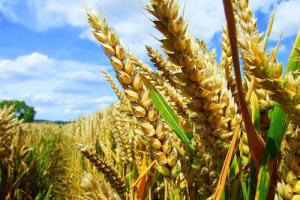Online tool can determine if fungicides are needed for wheat

With Ohio wheat nearing the critical flowering growth stage, it’s important for growers to use a regional online assessment tool to determine their risk for Fusarium head blight development, according to a wheat expert from Ohio State University’s College of Food, Agricultural, and Environmental Sciences.
Fusarium head blight, also called head scab, is of particular concern for growers now as wheat heads are most susceptible to the scab fungus during flowering, and infection is favoured by warm, wet or humid conditions, said Pierce Paul, an Ohio State University Extension wheat researcher.
Much of the state has experienced cooler conditions this week, thus reducing the risk of head scab for wheat flowering, said Paul, who is also a plant pathologist with the Ohio Agricultural Research and Development Center. OSU Extension and OARDC are the outreach and research arms, respectively, of the college.
“But many fields are likely to reach the flowering stage within the next two weeks, when temperatures are forecast to rise, which could increase the risk for scab,” he said. “The risk increases especially if it rains.”
Scab is the most economically important wheat disease in Ohio because it affects wheat in multiple ways, Paul said.
“Scab can cause vomitoxin contamination of the grain, making the grain unfit for marketing and unfit for human or animal consumption,” he said. “It infects wheat spikes during the time of flowering, which in Ohio is likely to occur next week and the week after, depending on the variety and when the field was planted.”
To assess the risk for scab and to determine whether a fungicide application at flowering is warranted for scab control, growers should use the Fusarium Risk Assessment Tool available at the Fusarium Head Blight Prediction Center website, wheatscab.psu.edu, Paul said.
“Growers should use the forecasting system to make management decisions because you can’t scout for this disease, because by the time you see the disease, it’s too late to manage,” he said. “Scab is a sporadic and dangerous disease that doesn’t occur every year. That’s why this is a good tool to use, because if you don’t catch scab in time, it can devastate a crop.”
Growers can experience a 50% or more crop loss even if they have only 10-15% of scab in their fields because more than 2 parts per million vomitoxin in the grain could cause the grain to be rejected.”
The scab forecasting system uses temperatures and relative humidity conditions up to flowering to calculate scab risk, helping growers determine whether there is a high, moderate or low risk for the disease, Paul said.
To use the system, growers need to select wheat type (winter) and their flowering date, which is the day when anthers are first seen sticking out of the heads. Color patterns across Ohio and neighboring states will then indicate the level of risk in the region for the flowering date selected, he said.
Red indicates a high risk, followed by yellow for moderate risk and green for low risk, Paul said.
“Growers should keep their eye on the scab forecasting system, which is still the best way to forecast risk,” he said. “If the forecasting system indicates that the risk is moderate to high, then you should apply fungicide.”
To control this disease, growers need to apply either Prosaro or Caramba fungicides at flowering, Paul said.
“Fungicides are most effective against scab and vomitoxin when applied at flowering,” he said. “If rain or something else prevents applications from being made at flowering, applications made up to 6 days after flowering will still reduce scab and vomitoxin.
“However, earlier applications (before flowering) tend to be less effective at suppressing scab and vomitoxin than applications made at flowering or a few days after.”
Source:The Ohio State University











